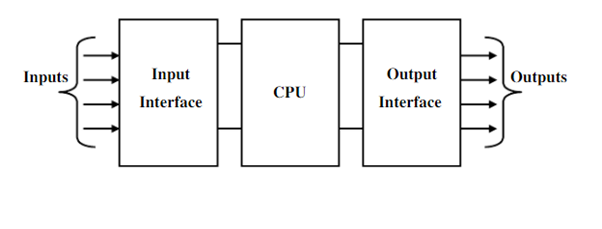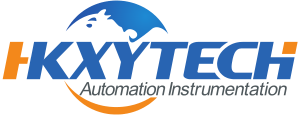What is Industrial Automation and What are its Components?
What is Industrial Automation and What are its Components?

What is industrial automation?
Automation is the use of machines, control systems, and information technologies to optimize productivity in the manufacturing processes with little human involvement.
Industrial automation helps us to process the plant operation in more optimized conditions by using various control systems such as Programmable Logic Circuit (PLC), Human-machine Interface (HMIs), and robotics.
Automation employs logic and programming to provide information to machines on how to accomplish a function; these machines provide great control, which enhances manufacturing performance.
In a manufacturing environment, industrial automation may consist of various types of equipment. In industrial automation control, multiple process variables such as temperature, flow, pressure, distance, and liquid levels can be recorded at the same time. All these variables are recorded, processed, and controlled by complex microprocessor systems or PC-based data processing controllers.
Advantages of Industrial Automation
The main advantages of industrial automation are
High reliability
Increased productivity
Quality enhancement and
Reduced labor expenses
What are the types of Industrial Automation?
There are different types of industrial automation available in the market based on their use. They are:
Fixed (Hard) Automation
Programmable Automation
Flexible (Soft) Automation
Totally Integrated Automation (TIA)
Fixed (Hard) Automation
This type of automation is used in high-volume production settings with dedicated equipment. To perform well there is a pre-installed operating set are available with the equipment
Fixed (Hard) Automation Advantages:
High production rates
Low unit cost
Fixed (Hard) Automation Disadvantages:
The initial investment is high
High chance for failure
Programmable Automation
The production equipment in this method is built to be able to modify the operation sequence to meet different product configurations.
It is mainly used when manufacturing products in batches because we can customize and make adequate changes throughout the manufacturing process.
A program of instruction always controls the manufacturing process in programmable automation. In this case, we can just load the program into the hardware system and begin producing new products at any moment.
Advantages of Programmable Automation :
Very flexible
Able to deal with design variations
Appropriate for batch production
Disadvantages of Programmable Automation:
High investment.
Production rate is low than fixed automation.
Flexible (Soft) Automation
The material-handling system connects several machine tools in flexible automation, and all components of the system are controlled or controlled by a central computer.
Flexible (Soft) Automation Advantages:
Continuous production of variable mixtures of products
Flexible to deal with product design variation
The production rate is medium
Flexible (Soft) Automation Disadvantages:
High investment
Cost is high compared to fixed automation
Totally Integrated Automation (TIA)
Integrated industrial automation refers to the comprehensive automation of production operations, in which all processes are coordinated digitally and controlled by computers. It includes technology such as:
Computer-aided process design
Machine systems that are adaptable
Machine tools for computer numerical control
Material-handling robots are examples of automated material-handling systems.
Systems for automatic storage and retrieval
Control of production and scheduling by computer
Conveyors and cranes that are automated
Main Components ofIndustrial Automation
PLC – Programmable Logic Controller
DCS- Distributed control system
SCADA
Advance Solutions
Cyber Security
OT
PLC
A PROGRAMMABLE LOGIC CONTROLLER (PLC) is an industrial control system that continuously analyses the status of input devices and makes choices to control the state of output devices based on a custom program. To automate a process or machine, a PLC monitors inputs, makes choices based on its program, and controls outputs.

PLC has composed of three main parts:
Input,
CPU and
Output.
Architecture of PLC

Basic PLC Operation :
A PLC consists of Input modules, a central processing unit (CPU), and output modules. An input device collects digital or analog signals from various field devices known as sensors and converts them into a logic signal that the CPU may use. Depending on the program instructions stored in the system memory, the CPU makes decisions and executes control instructions. A programming tool provides the appropriate instructions, which specify what the PLC will do in response to the presented input. An operator interface allows the device to show process information and add new control settings.
What are the advantages of PLCs?
The advantages of PLCs are
Smaller in size compared to Relay logic solutions.
Easy to handle
Faster response
Less maintenance
Easier to troubleshoot.
Better reliability
Remote control and communication capability.
Major PLC manufacturers list
Siemens.
Rockwell Automation / Allen Bradley.
Mitsubishi Electric
Schneider Electric.
ABB.
Honeywell Process.
Omron.
Hitachi Industrial Equipment Systems.
Distributed Control System (DCS)
A distributed control system, or DCS for short, is a manufacturing plant control system with autonomous controllers scattered throughout the system.
The distribution of control system architecture throughout the plant has resulted in more efficient methods of improving control stability, process quality, and plant efficiency.
DCS are commonly used in the following processes,
Oil and Gas
Petrochemicals
Chemical plants
Nuclear power plants
Water treatment plants
Sewage treatment plants
Food processing
Automobile manufacturing
Pharmaceutical manufacturing
A DCS is made up of both software and hardware. The simplicity of local installation with most controllers reduces installation expenses. On-site, low-latency automated control improves reliability, while central control functions and remote control alternatives allow for human oversight. Unlike a central controller system, individual processes have their own controllers with separate CPUs, allowing other processes to continue in the event of a breakdown.
What is the Function of a DCS?
While DCS are used in a variety of industries to manage complicated production processes, they are most commonly seen in large, continuous manufacturing plants like Oil and Gas, petrochemical industry. Individual controllers receive instructions from the DCS, which are then distributed throughout the plant. When properly set, the DCS can increase safety while simultaneously increasing production efficiency.

Major DCS manufacturers list
Honeywell
Yokogawa
Emerson Electric
Invensys Limited
Siemens
Metso
ABB
General Electric
Mitsubishi
Rockwell
Airticle sources is from website: https://automationforum.co/what-is-industrial-automation-2/
Latest News
-
ORBINOX EK (SER.15) Uni-directional high performance knife gate valve
 November
21, 2025
November
21, 2025
-
ORBINOX EX (SER.10) model Knife Gate Valve
 November
21, 2025
November
21, 2025
-
Samson 3260/3 pneumatic - DIN Globe valve
 November
14, 2025
November
14, 2025
